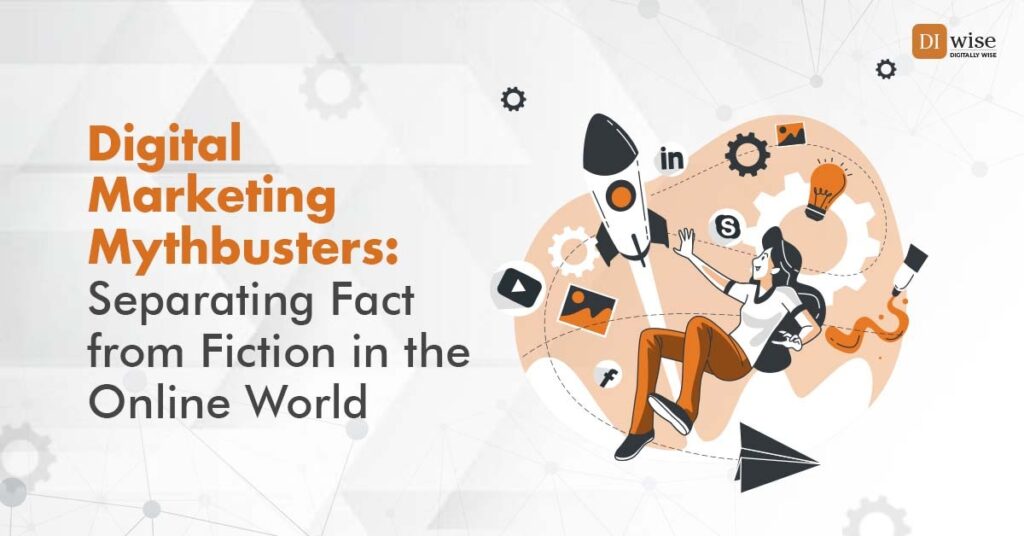The ever-evolving world of digital marketing can be a breeding ground for misconceptions. With so much information at our fingertips, it’s easy to fall victim to myths that can derail your marketing strategy. But fear not, intrepid marketers! We’re here to debunk some of the most common myths with data and research, so you can navigate the digital landscape with confidence.
Myth #1: More Website Traffic Equals More Sales
While website traffic is important, it’s not the sole indicator of success. Imagine a bustling street with lots of people walking by, but no one entering your store. Similarly, high website traffic with no conversions (turning visitors into customers) doesn’t translate to actual sales.
Focus on: Quality over quantity. Analyze your website traffic to understand who your visitors are and what they’re looking for. Tailor your content and calls to action to their specific needs and interests. This will help you attract the right kind of traffic and convert them into paying customers.
Myth #2: Social Media is Just for Brand Awareness
While brand awareness is a valuable outcome of social media marketing, it’s not the only one. Social media platforms can be powerful tools for driving lead generation, product promotion, and customer engagement.
Data speaks: According to HubSpot: [invalid URL removed], 78% of marketers say that social media marketing has increased brand awareness, while 64% say it has increased leads.
Utilize social media to: Share valuable content, run targeted ads, interact with your audience, and build relationships with potential customers. These efforts can lead to increased sales and a loyal customer base.
Myth #3: SEO is a One-Time Task
Search engine optimization (SEO) is an ongoing process, not a one-time fix. Search engine algorithms constantly evolve, and your competitors are constantly adapting.
Stay ahead of the curve: Regularly update your content, monitor your keyword rankings, and ensure your website’s technical health is in order. By staying up-to-date with the latest SEO trends and best practices, you can maintain or improve your search engine visibility and attract organic traffic.
Myth #4: Email Marketing is Dead
Despite the rise of other marketing channels, email marketing remains a potent tool. In fact, it boasts one of the highest ROI (Return on Investment) in digital marketing.
The numbers don’t lie: According to Campaign Monitor: [invalid URL removed], the average ROI for email marketing is $42 for every $1 spent.
Craft compelling emails: Leverage email marketing to nurture leads, promote special offers, and build stronger customer relationships. Personalized, value-driven email campaigns can be highly effective in driving engagement and conversions.
Myth #5: Content Quantity Trumps Quality
In the content marketing world, quality reigns supreme. Filling your website with low-quality, irrelevant content will not attract or engage your audience.
Invest in quality: Focus on creating informative, engaging, and valuable content that resonates with your target audience. This will establish you as a thought leader in your industry, build trust with potential customers, and ultimately drive more conversions.
By debunking these common myths and focusing on data-driven strategies, you can navigate the digital marketing landscape with confidence and achieve your marketing goals. Remember, staying informed, staying flexible, and adapting to the ever-changing environment are key to success in the exciting world of digital marketing.

